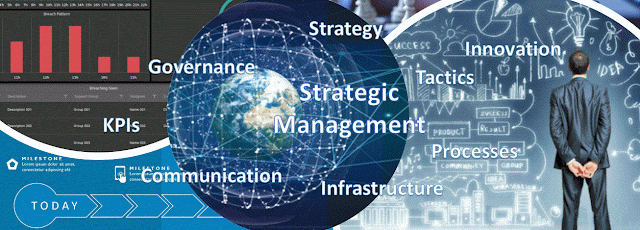Disclaimer: This is work in progress intended to consolidate information from various sources for learning purposes. For the latest information please consult the documentation (see the links below)!
Last updated: 8-Dec-2024
Microsoft Fabric
- {goal}complete (end-to-end) analytics platform [6]
- {characteristic} unified
- {objective} provides a single, integrated environment for all the organization
- {benefit} data professionals and the business users can collaborate on data projects [5] and solutions
- {characteristic}serverless SaaS model (aka SaaS-ified)
- {objective} provisioned automatically with the tenant [6]
- {objective} highly scalable [5]
- {objective} cost-effectiveness [5]
- {objective} accessible
- ⇐ from anywhere with an internet connection [5]
- {objective} continuous updates
- ⇐ provided by Microsoft
- {objective} continuous maintenance
- ⇐ provided by Microsoft
- provides a set of integrated services that enable to ingest, store, process, and analyze data in a single environment [5]
- {objective} secure
- {objective} governed
- {goal} lake-centric
- {characteristic} OneLake-based
- all workloads automatically store their data in the OneLake workspace folders [6]
- all the data is organized in an intuitive hierarchical namespace [6]
- data is automatically indexed [6]
- provides a set of features
- discovery
- MIP labels
- lineage
- PII scans
- sharing
- governance
- compliance
- {characteristic} one copy
- available for all computes
- all compute engines store their data automatically in OneLake
- ⇐ the data is stored in a (single) common format
- ⇐ delta parquet file format
- open standards format
- the storage format for all tabular data in Microsoft Fabric
- ⇐ the data is directly accessible by all the engines [6]
- ⇐ no import/export needed
- all compute engines are fully optimized to work with Delta Parquet as their native format [6]
- a shared universal security model is enforced across all the engines [6]
- {characteristic} open at every tier
- {goal} empowering
- {characteristic} intuitive
- {characteristic} built into M365
- {characteristic} insight to action
- {goal} AI-powered
- {characteristic} Copilot accelerated
- {characteristic} ChatGPT enabled
- {characteristic} AI-driven insights
- complete analytics platform
- addresses the needs of all data professionals and business users who target harnessing the value of data
- {feature} scales automatically
- the system automatically allocates an appropriate number of compute resources based on the job size
- the cost is proportional to total resource consumption, rather than size of cluster or number of resources allocated
- jobs in general complete faster (and usually, at less overall cost)
- ⇒ not need to specify cluster sizes
- natively supports
- Spark
- data science
- log-analytics
- real-time ingestion and messaging
- alerting
- data pipelines, and
- Power BI reporting
- interoperability with third-party services
- from other vendors that support the same open
- data virtualization mechanisms
- {feature} mirroring [notes]
- {feature} shortcuts [notes]
- allow users to reference data without copying it
- {benefit} make other domain data available locally without the need for copying data
- {feature} tenant (aka Microsoft Fabric tenant, MF tenant)
- a single instance of Fabric for an organization that is aligned with a Microsoft Entra ID
- can contain any number of workspaces
- {feature} workspaces
- {definition} a collection of items that brings together different functionality in a single environment designed for collaboration
- associated with a domain [3]
- {feature} domains [notes]
- {definition} a way of logically grouping together data in an organization that is relevant to a particular area or field [1]
- subdomains
- a way for fine tuning the logical grouping data under a domain [1]
- subdivisions of a domain
Acronyms:
API - Application Programming Interface
M365 - Microsoft 365
MF - Microsoft Fabric
PII - Personal Identification Information
SaaS - software-as-a-service
Resources:
[1] Microsoft Learn (2023) Administer Microsoft Fabric [link]
[2] Microsoft Learn: Fabric (2024) Governance overview and guidance [link]
[3] Microsoft Learn: Fabric (2023) Fabric domains [link]
[4] Establishing Data Mesh architectural pattern with Domains and OneLake on Microsoft Fabric, by Maheswaran Arunachalam [link]
[5] Microsoft Learn: Fabric (2024) Introduction to end-to-end analytics using Microsoft Fabric [link]
[6] Microsoft Fabric (2024) Fabric Analyst in a Day [course notes]











